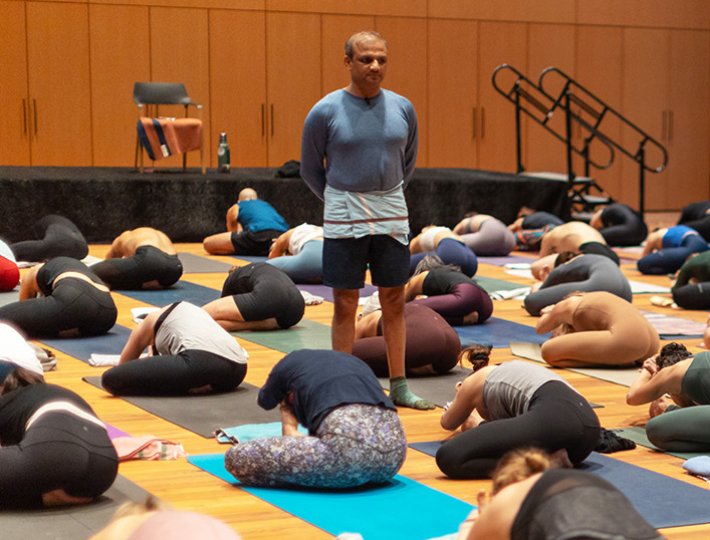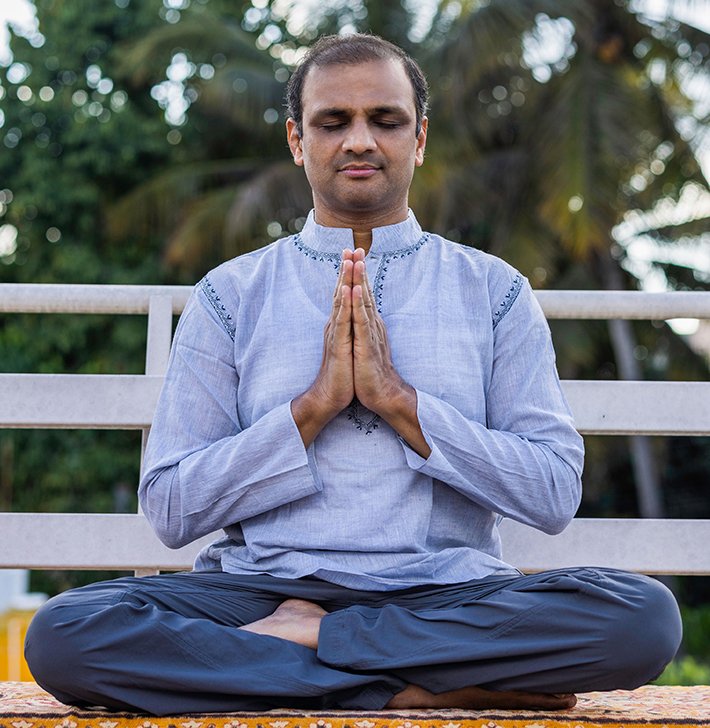Every night, we lay in our beds cuddled warm in our pajamas. As we close our eyes and withdraw from the outside world, something incredible happens: We dream.
“Dreaming ties all mankind together,” wrote Jack Kerouac. No matter our age, race, creed or gender, we dream every single night. It has always been, and continues to remain, one of the most mysterious and fascinating universal human experiences.
But what exactly are dreams? And why do we have them?
Many of us believe we don’t dream. We wake up in the morning grasping only fragments; fleeting images that seem more absurd than they do important. I was back in high school… skiing… wearing a scuba outfit? This, we determine, must be what dreams are: nonsense!
And thus, we miss the bigger picture. We forget to realize that those wispy images in the morning are not the actual dream itself but the memory of the dream. That would be like trying to remember what you did four days ago. The memory will be similar to a dream, with only bits of detail sticking out here and there. But of course, four days ago was a real moment, complete with sights, sounds, smells, weight, and texture.
Our dreams, too, have a present moment just as real and vibrant as this moment right here. Awakening to this present moment can be a profound and life-changing experience. And it can forever change the way we dream.
We call it lucid dreaming.
What is Lucid Dreaming?
A lucid dream is when we become fully awake, or aware, while dreaming.
We are asleep, yet we can walk around, think clearly, have complete access to our waking memory, and full utilization over our rational mind, all while remaining within a dream. Typically when we dream, we do so unconsciously, reacting passively to the events of the dream, unable to reflect, clouded in a sort of sleep-trance. In a lucid dream, we have direct influence over ourselves and the dream’s content—we have clear (lucid) awareness. We know we’re dreaming. And with this awareness in dreams comes choice, and with choice freedom.
When we’re lucid something very interesting happens. All of the sudden, the world around us becomes crystal clear, responsive and intimately alive. We feel ourselves connected to everything else. It’s as if the air around us is imbued with a presence, one that surrounds and permeates everything in the dream, even ourselves. And because we’re one with the dream, we have the freedom to change it.
How Do We Know It’s Really Possible?
At the time of my first lucid dream I had no language for explaining or understanding the experience. It wasn’t until I was a teenager searching for others who were having similar experiences that I came across the term “lucid dreaming.” My fascination skyrocketed when I found that this experience was anything but new. In fact, there were accounts suggesting ancient Egyptians cultivated and believed in such abilities and that specific practices were used by the ancient Tibetans for strengthening this ability. Lucid dreaming has a rich and fascinating history and modern science is helping us understand it better.
Stephen LaBerge, Ph.D., a psychophysiologist and founder of The Lucidity Institute, conducted extensive research on the lucid dream state in the 1980s and 90s. His most notable study verified the existence of lucid dreaming by recording subjects giving a predetermined eye signal while dreaming. Another study conducted by researchers in Frankfurt, Germany, in 2009 and published in the journal Sleep showed that lucid dreams are a unique state of consciousness different from ordinary (REM) dreams in that the dreamers reached a brain frequency known as Gamma (40Hz). Gamma is a heightened brain activity attributed to higher mental functioning and a rise in self-awareness.
New research published in a recent issue of The Journal of Neuroscience revealed that in lucid dreamers, the brain area which enables self-reflection, primarily the anterior prefrontal cortex, is larger than in non-lucid dreamers. In 2014, scientists were able to stimulate lucid dreaming by passing electrical currents in the low gamma band through subjects’ brains while they slept.
A common thread throughout all ancient and modern understandings of lucid dreaming is an increase in self-awareness. “Our results indicate that self-reflection in everyday life is more pronounced in persons who can easily control their dreams,” said Elisa Filevich researcher at the Max Planck Institute, a German research organization focusing on natural sciences, life sciences, social sciences, and the humanities. Our ability to reflect and become present throughout our daily lives proves to be an important key for inducing lucid dreams.
Why Would You Want To Lucid Dream?
I had my first lucid dream when I was 7 or 8 years old. I remember it clearly: I’m flying miles above the Earth alongside a flock of geese. I can feel the wind on my face, the weight of my clothes whipping against my skin, the heat of the sun warming my back. Everything is alive and clear and I know that I’m dreaming. I can’t believe how fast the geese are flying. After a thrilling ride above the clouds, I barrel roll onto my back and wake up.

The wonderful thing about dreaming is that it is deeply personal. I cannot tell you why you would want to lucid dream. But here’s why I lucid dream.
Freedom: When I was learning to lucid dream as a teenager, I wanted nothing more than to fly and mess around in my dreams. My lucid dreams were the ultimate playground providing me an outlet for fantasy fulfillment and freedom from physical limitations like nothing else. Flying, sex, and every desire you can think of can become a reality. And this is only the beginning.
Healing: I began stabilizing my lucid dreams for longer periods of time. I began focusing my attention towards past traumas, nightmares, and emotional issues in my life. I used lucid dreams to come to terms with my past and gain closure in my relationships. It was sometimes painful, but always freeing. Lucid dreaming provided a safe environment for me to face my darkness.
Guidance: I’ve received incredible guidance in my lucid dreams: a 300-foot whale made of light, a woman dressed completely in gold, Abraham Lincoln, a tree, even a bedpost gave me some deeply significant pieces of advice while in a lucid dream, all of which were extremely transformative and pertinent to my life at that time.
Understanding: It took me forever to learn one of the biggest lessons of lucid dreaming. Let me save you some time if you’re just starting out: don’t change the dream, change yourself. I spent years thinking I was “controlling” the dream. This isn’t the goal, nor is this where your power is. Like a mirror, the dream is intimately connected to you, to your thoughts, your beliefs, your expectations, your emotions. When you change, the dream responds instantly.
Increase in Waking Awareness: My dreams taught me that every moment is an opportunity to be lucid and soon I was taking this heightened awareness into my waking life. I was finding myself more present, able to create and direct my intent onto my life rather than simply reacting to life’s events passively. If a circumstance or situation arose that I didn’t want, I could no longer blame anyone. I was the dreamer of my life. And just like a dream, if I wanted to change it, I had to change myself.
More than all of this, lucid dreaming opened me up to a completely bigger picture of who I am. In a particularly long lucid dream, I had the thought, “I’m seeing right now, clearly in fact, but not with my physical eyes. I can hear but not with my ears. I have the sensation of touch, taste, and smell but not with my physical body. How?” Lucid dreaming showed me that we are more than just our physical bodies. That reality is more than what we can perceive with just our five senses. There exists completely real and tangible dimensions of human experience each with its own unique laws and rules. Lucid dreaming can allow us to experience these mysteries through direct experience.
How Do You Have A Lucid Dream?
The good news: Everyone can lucid dream. Everyone. We don’t need a bigger brain or electrical charges shocked through our prefrontal cortex either, though it might help. Luckily, history and modern research has provided us with many practical methods and techniques for learning how to lucid dream whenever you choose.
Morning Practices
- Wake Up Slowly: The single biggest reason many of us don’t remember our dreams is because we wake up abruptly. If you can, even if only on the weekends, do not use an alarm. As you wake up naturally, keep your eyes closed and remain motionless. Recall the dream you were just in. If you can’t remember anything, slowly switch your position. It is found that we can remember our dreams better in the position in which we had them.
- Keep A Dream Journal: Every lucid dreamer must keep a log of their journeys. Do you think Lewis and Clark explored the uncharted west without bringing a pad of paper? Studies show that five minutes after waking, 50% of the dream is forgotten, after 10 minutes, nearly 90%. First thing in the morning, write down what you remember, even if only keywords.
Daytime Practices
- Cultivate Presence: This is crucial. Before we can wake up within our dreams, we first have to wake up here in the physical world. In other words, we must increase our self-awareness throughout the day. A powerful technique to help accomplish this is a reality check. The goal is simple: to bring you here and now to the present moment. Throughout your day, as much as possible, Take notice of your thoughts, your environment, your actions. Genuinely ask yourself, “Am I dreaming right now?” Soon this habit will trickle over into your dreams and what a beautiful moment it will be when you answer, “YES, I am dreaming!”
- Quiet the Mind: As you will come to know, our thoughts are extremely powerful once we are within the dream. They have the ability to shape the dream and our surroundings. This is why it’s important to develop a mind that is strong, focused, and still. Train your mind to be calm and present by simply taking the time to sit with it in silence. As you monitor the activities of your mind you’ll notice just how wild and crazy our thoughts can be. In developing and strengthening your mind’s stability, you will begin to notice longer and longer gaps between one thought ending and another arising. Prolong this.
Night-time Practices
- Auto-Suggestion: As you relax your body in bed, imagine yourself becoming fully lucid and aware in a dream. Feel the heightened awareness and clarity. Gently suggest to yourself, “I will become lucid in my dreams.” Let this be the most dominant thought as you enter sleep.
- Wake-Back-To-Bed: The single most powerful technique I’ve found for inducing lucid dreams is the wake-back-to-bed There are many variations of it, but in general it goes something like this: go to sleep for 4-6 hours. Wake up slowly. Stay up for 15-20 minutes and direct your mind towards lucid dreaming. Affirm to yourself that you will become awake and aware within your dream. Now go back to sleep knowing that the next image to appear will be a dream. With practice, this technique will provide easy entry into a lucid dream.
The Next Frontier
In our dreams we can explore the vast and uncharted terrain of our own mind. We can replay our day, scout ahead at possible futures, or project ourselves into the past. It’s a place we can rendezvous with lost loved ones, receive clarity, inspiration, and guidance and discover deeper parts of ourselves. Human exploration and understanding of this is far from over. There still exists an entirely unexplored territory of the human frontier, one that can give us access to these inner worlds every single night—our dreams.










Comments (0)